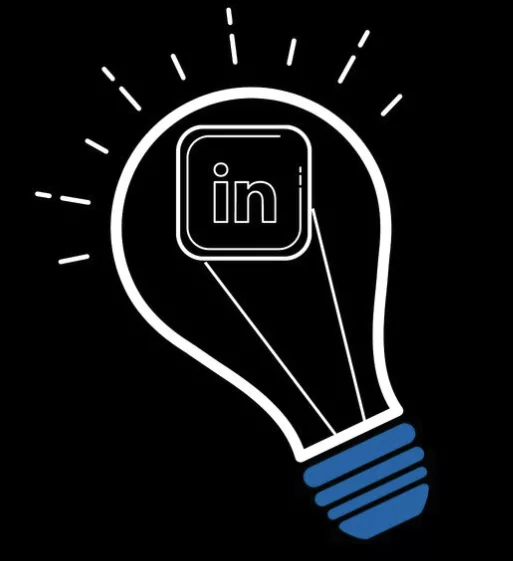Meet Sarah.
She’s a go-getter business owner like you and me.
Sarah initially takes the DIY route, buying tons of online courses and business books, burning the midnight oil, trying to make sense of it all.
But guess what? Without guidance, she feels lost in an ocean of information.
Sound familiar?
Next, Sarah decides to give group coaching a shot.
She’s now part of a community, with weekly sessions and a structured environment.
But there’s a hitch.
The pace doesn’t suit everyone, and Sarah often finds herself waiting for others, struggling to catch up, or getting the support she needed.
Does this resonate with you?
I was tired of learning models that felt restrictive and impersonal.
I craved a method that put me in the driver’s seat, letting me control the pace of my learning journey while receiving guidance and feedback to ensure I was on the right track.
In 1979, 279 people on a sightseeing flight died because they were 2 degrees off.

We may not be flying planes, but the same difference applies.
Once we have direction, we need to reduce pressure and find our groove.
Remembering my school days, I recalled how frustrating it was when the pace was controlled by the teacher, not by the individual student’s capacity or interest.
This caused boredom or overwhelm.
I was rarely in my own sweet spot.
I didn’t want this for my clients.
I wanted them to have a learning experience that was personal, flexible, and effective.
That’s when the lightbulb moment happened.
DIY and Group Coaching – A Square Peg in a Round Hole
Ever tried DIY learning or group coaching? Here’s why they might not be working for you:
DIY Learning:
– No guidance: Ever felt overwhelmed, like you’re lost in the woods with no compass? That’s DIY for you.
– The “2 degrees off” scenario: Small mistakes now can mean big detours later.
– Motivation and focus: Without someone to cheer you on, it’s easy to lose steam.
Group Coaching:
– One size doesn’t fit all: Ever felt bored waiting for others? Or panicked because you couldn’t keep up? That’s the drawback of group pacing.
– Limited feedback: With a big crowd, the feedback you get might not be relevant enough to make the difference.
Enter: The Accelerator Model
As a business owner, you’re probably familiar with the concept of a business accelerator.
They’re programs designed to help startups gain ground quickly by providing resources, mentorship, and networking connections.
It’s a proven model that has been pivotal in the growth stories of many successful businesses..
We used that as inspiration to create a new model of how done-with-you services are implemented, without the drawbacks Sarah, myself, and thousands of others experienced.
We created a new approach – the Accelerator model.
It’s like having a GPS system with a dedicated support team for your journey.


-Here’s what the items in the table mean:
– Personalized: Indicates if the method allows for customization based on individual needs.
– Pace Control: Whether the learner can control the pace of learning.
– In-Depth Guidance: If the method provides comprehensive guidance to the learner.
– Hands-On Learning: Whether the learner is actively involved in the learning process.
– Ownership & Control: Does the learner have control over the learning process and its outcomes?
– Active Feedback: Whether the learner receives timely and specific feedback during the learning process.
The Devil is in the Details
Group coaching surpasses DIY methods due to the invaluable feedback it offers.
However, effectively addressing the countless nuances involved cannot be accomplished solely through a Q&A call, unfortunately.
By incorporating expertise, successful implementation can be ensured, resulting in tangible outcomes.
In our Outreach Accelerator, we focus on the ‘how’ just as much as the ‘what’.
It’s not about simply dispensing advice and directives, but rather about offering resources and tools that allow businesses to refine their skills continuously and sustainably.
Moreover, the Outreach Accelerator aims to facilitate evolution, not just education.
It helps businesses gain deeper insight into their own operations, equipping them with the necessary tools to handle challenges and seize opportunities with confidence.
Reflecting on the six elements from our comparison table, the Outreach Accelerator exemplifies a solution that aligns with them all:
– Personal Pace: Businesses progress at a pace that suits their rhythm and operational demands.
– Accountability: The structure of the program fosters a sense of responsibility and active engagement in the learning process.
– Deep Level of Feedback: It enables meaningful interactions that foster a deeper understanding of areas that require improvement.
– High Interaction: The environment encourages active collaboration, contributing to a more enriching learning experience.
– Concrete Steps: It offers a roadmap, providing a clear direction towards achieving business goals.
– Team Verification: A dedicated team verifies progress and provides guidance, ensuring no business feels lost or overlooked.
Look, I’m not gonna sugarcoat this.
DIY and group coaching models are all about what’s best for the business.
They’re attractive because they’re scalable, but let’s be honest here, are they truly the best for our clients?
I get it, the lure of scalability that traditional models offer can be compelling, but at what cost?
Mediocre success rates?
A revolving door of clients who aren’t fully satisfied?
Nah, that’s not the game we’re playing.
With the Accelerator model, we’re going all in on our clients’ success.
We’re creating a space where clients don’t just learn, they evolve.
They don’t just achieve, they excel.
So, sure, go ahead with the easy-to-scale, one-size-fits-all models if you must.
But if you’re looking for real impact, for unprecedented success rates, and for clients who stick around because they’re genuinely achieving their goals, then the Accelerator model is that balance between scalability and impact.
It’s time we stop settling for what’s easy and start striving for what’s effective.
Want to go faster?
1. If you’re looking for traction on LinkedIn, the best place to start is with a free audit so you can know what you personally should focus on: → LinkedIn Profile Audit
2. Level up your messaging: → Prospect Primer Pack
3. Consistently Secure High-Quality Clients on LinkedIn with Our Proven System → Market Domination Plan

